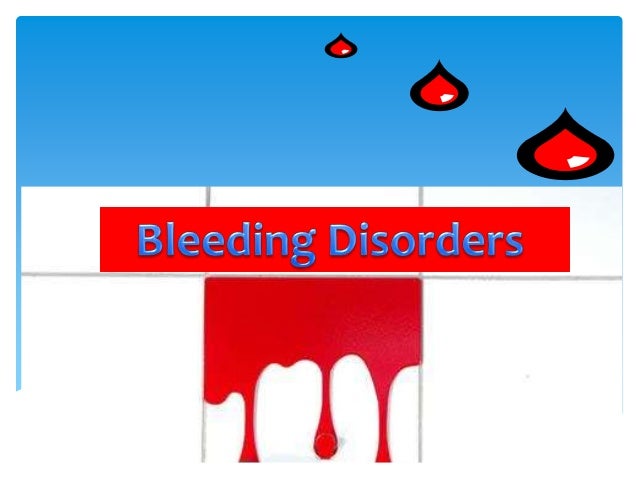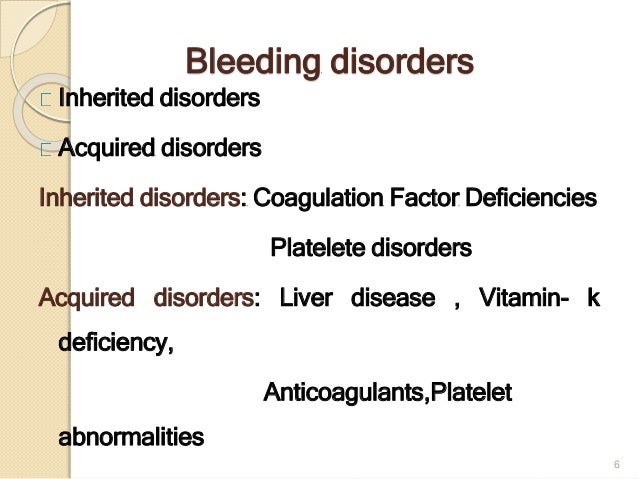A bleeding disorder is a condition that affects the way your blood normally clots. Coagulation is the name of the clotting process that changes blood from a liquid to a solid. You may have noticed that when your injured your blood normally begins to clot to prevent a massive loss of blood. When ones blood does not clot properly bleeding may be heavy and prolonged.
When there are issues with abnormal bleeding outside and / or inside the body it is primarily due to a bleeding disorder. Bleeding disorders can increase the amount of blood leaving your body, bleeding to occur under the skin or in organs such as the brain.
Blood clotting depends on blood proteins called clotting factors and blood cells called platelets. Platelets will normally clump together to form a plug at the site of a damaged or injured blood vessel A fibrin clot happens when the clotting factors mix. The platelets will then stay in place and prevent blood from flowing out of the blood vessel. If a bleeding disorder is present the clotting factors or platelets will not work properly or be in short supply. If the blood does not clot, excessive or prolonged bleeding occurs. This in turn can lead to sudden bleeding in muscles, joints or other body parts.
Many bleeding disorders can be inherited from a parent and passed to a child. Medical conditions may also cause bleeding disorders to occur. Other reasons for bleeding disorders occur because of low red blood cell count, vitamin K deficiency, and / or side effects of medications. These medications are known as anticoagulants.
Signs of bleeding disorder may vary depending on the type but signs may include:
- unexplained and easy bruising
- heavy menstrual bleeding
- frequent nose bleeds
- excessive bleeding from small cuts or an injury
One or more of these symptoms should be reason enough to schedule an appointment with your doctor. Your doctor can diagnose your condition and help prevent complications of blood disorders
When you contact your doctor the first thing they may do is inquire about your symptoms and medical history. Often a physical exam will be done. Be sure to let the doctor know when the bleeding occurs and how long it lasts. Medications and vitamins that you take and when the bleeding began should help your doctor with a diagnosis as well. Blood test may be ran. These test often include:
- CBC that measures red and white blood cells in your body
- platelet aggregation test
- test to see how long it takes your blood to clot




No comments:
Post a Comment
I love comments so if you have a minute leave me your thoughts on the above post